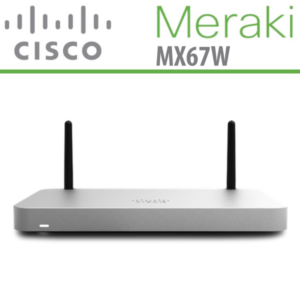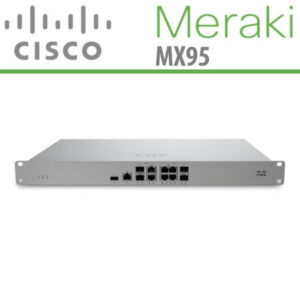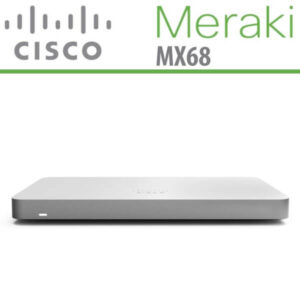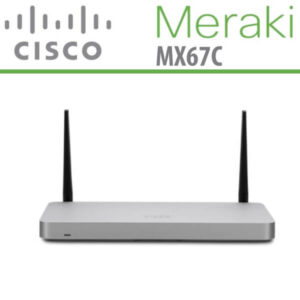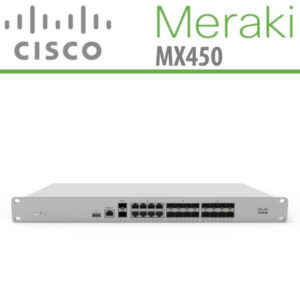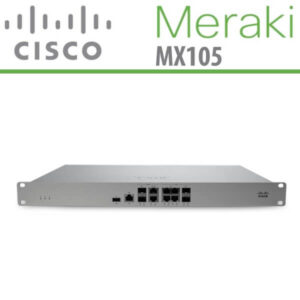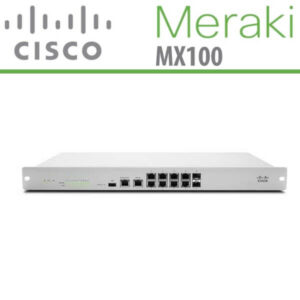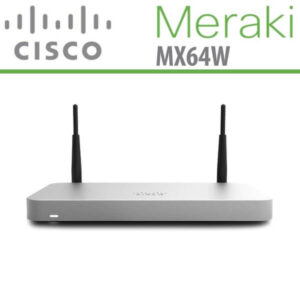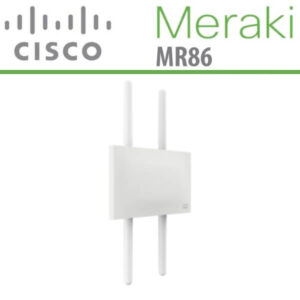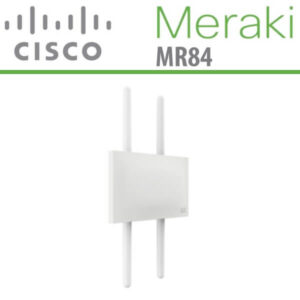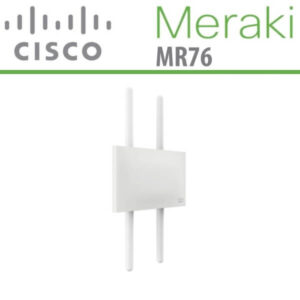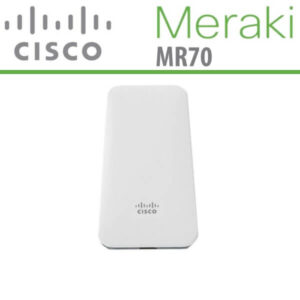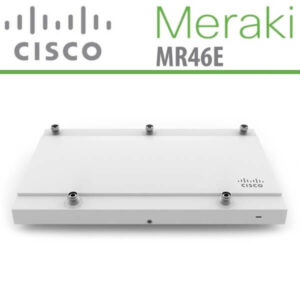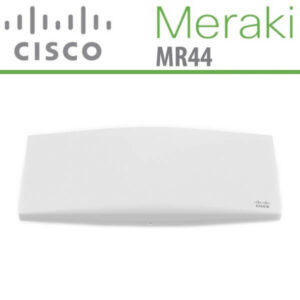Description
Meraki MR52E Dubai
The Meraki MR52E Dubai is a cloud-based access point that supports 4×4:4 802.11ac Wave 2 technology. It offers 160 MHz channels and MU-MIMO support, making it ideal for modern environments such as offices, schools, hospitals, shops, and hotels. With its high performance, enterprise-grade security, and easy management, the Meraki wifi AP Dubai is designed for next-generation deployments. The Meraki MR52E Dubai access point can provide a maximum aggregate frame rate of 2.5 Gbps*, thanks to its concurrent 2.4 GHz and 5 GHz radios. Additionally, it has a dedicated third radio for real-time WIDS/WIPS with automated RF optimization. There is also a fourth integrated radio that enables Bluetooth Low Energy (BLE) scanning and Beaconing. The combination of cloud management, powerful hardware, multiple radios, and advanced software features makes the Meraki wifi AP Dubai an exceptional choice for demanding scenarios. This includes high-density deployments and applications that require significant bandwidth or performance, such as voice and high-definition video.
Meraki MR52E Specification
Radios
- 4 GHz 802.11b/g/n/ac client access radio
- 5 GHz 802.11a/n/ac Wave 2 client access radio
- 4 GHz & 5 GHz dual-band WIDS/WIPS, spectrum analysis, and location analytics radio
- 4 GHz Bluetoth Low Energy (BLE) radio with Beacon and BLE scanning support.
- Concurrent operation of all three radios
Supported frequency bands (country-specific restrictions apply):
- 412-2.484 GHz
- 150-5.250 GHz (UNII-1)
- 250-5.350 GHz (UNII-2)
- 470-5.600, 5.660-5.725 GHz (UNII-2e)
- 1725-5.825 GHz (UNII-3)
Antenna
- Integrated omni-directional antennas (5.5 dBi gain @ 2.4 GHz, 6.2 dBi gain @ 5 GHz)
- Individual antenna elements for each radio
802.11ac Wave 2 and 802.11n Capabilities
- 4 x 4 multiple input, multiple output (MIMO) with four spatial streams
- SU-MIMO and MU-MIMO support
- Maximal ratio combining (MRC) and beamforming
- 20 and 40 MHz channels (802.11n); 20, 40, 80, and 160 MHz channels (802.11ac)
- Up to 256-QAM on both 2.4 GHz and 5 GHz bands
- Packet aggregation
Power
- Power over Ethernet : 37-57 V (802.3at required; functionality-restricted 802.3af mode supported)
- Alternative 12 V DC input
- Power consumption : 21W max (802.3at)
- Power over Ethernet injector and DC adapter sold separately
Interfaces
- 2x 10/100/1000 BASE-T Ethernet (RJ45)
- 1x DC power connector (5.5 mm x 2.5 mm, center positive)
Mounting
- All standard mounting hardware included
- Desktop, ceiling, and wall mount capable
- Ceiling tile rail (9/16, 15/16, or 1 1/2” flush or recessed rails), assorted cable junction boxes
- Bubble level on mounting cradle for accurate horizontal wall mounting
Physical Security
- Two security screw options included
- Kensington lock hard point
- Concealed mount plate with anti-tamper cable bay
Environment
- Operating temperature : 32 °F to 104 °F (0 °C to 40 °C)
- Humidity : 5% to 95%
Physical Dimensions
- 56” x 6.38” x 1.58” (268.2 mm x 162.0 mm x 38.8 mm), not including deskmount feet or mount plate
- Weight : 28.9 oz (820g)
Security
- Integrated Layer 7 firewall with mobile device policy management
- Real-time WIDS/WIPS with alerting and automatic rogue AP containment with Air Marshal
- Flexible guest access with device isolation
- VLAN tagging (802.1Q) and tunneling with IPSec VPN
- PCI compliance reporting
- WEP, WPA, WPA2-PSK, WPA2-Enterprise with 802.1X
- EAP-TLS, EAP-TTLS, EAP-MSCHAPv2, EAP-SIM
- TKIP and AES encryption
- Enterprise Mobility Management (EMM) & Mobile Device Management (MDM) integration
- Cisco ISE integration for guest access and BYOD posturing
Quality of Service
- Advanced Power Save (U-APSD)
- WMM Access Categories with DSCP and 802.1p support
- Layer 7 application traffic identification and shaping
Mobility
- PMK, OKC, and 802.11r for fast Layer 2 roaming
- Distributed or centralized Layer 3 roaming
Analytics
- Embedded location analytics reporting and device tracking
- Global L7 traffic analytics reporting per network, per device, and per application




